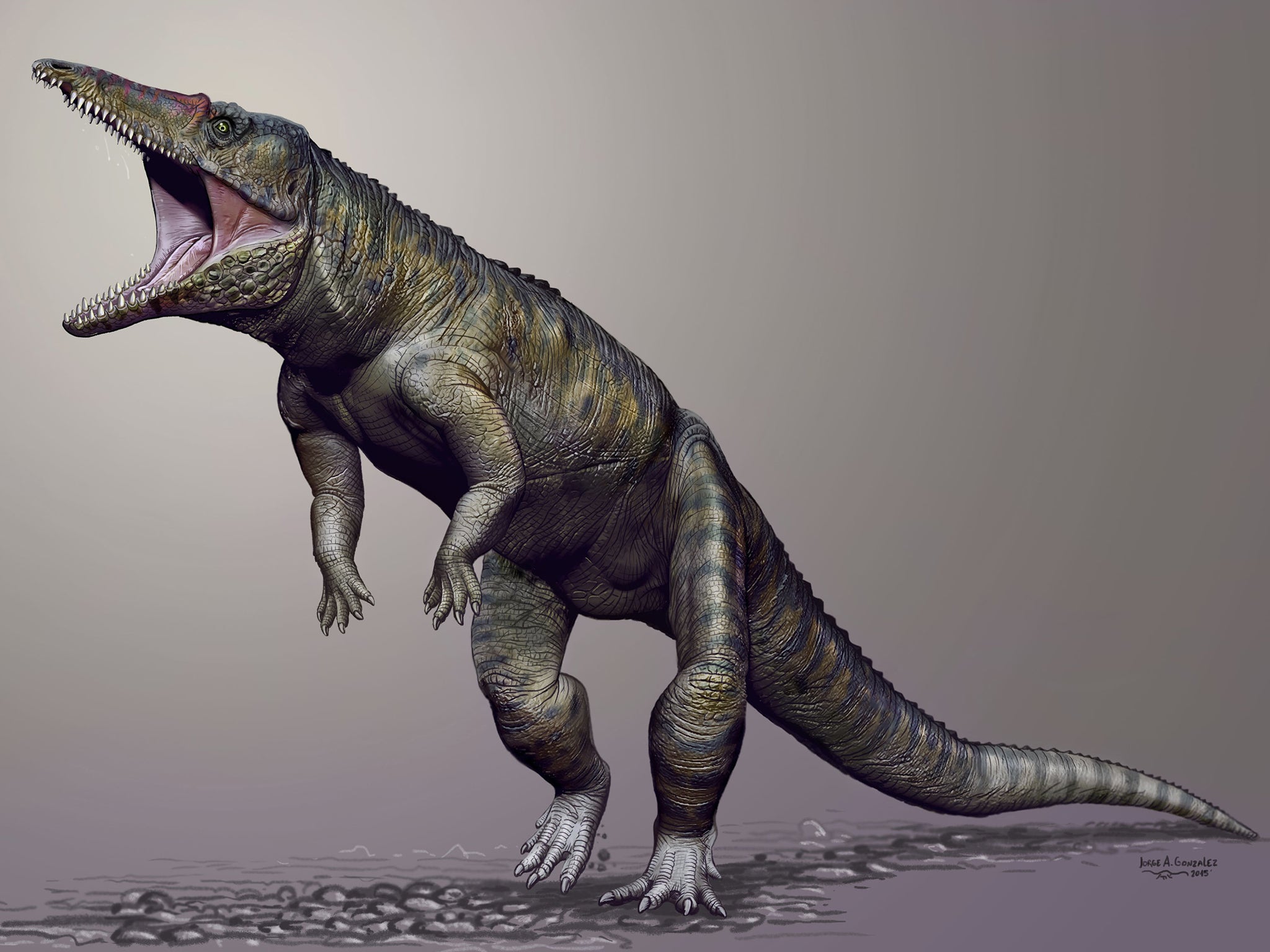The Carolina Butcher: Paleontologists find ancient crocodiles which walked on hind legs
9ft animal roamed South Carolina 220m years ago

Your support helps us to tell the story
From reproductive rights to climate change to Big Tech, The Independent is on the ground when the story is developing. Whether it's investigating the financials of Elon Musk's pro-Trump PAC or producing our latest documentary, 'The A Word', which shines a light on the American women fighting for reproductive rights, we know how important it is to parse out the facts from the messaging.
At such a critical moment in US history, we need reporters on the ground. Your donation allows us to keep sending journalists to speak to both sides of the story.
The Independent is trusted by Americans across the entire political spectrum. And unlike many other quality news outlets, we choose not to lock Americans out of our reporting and analysis with paywalls. We believe quality journalism should be available to everyone, paid for by those who can afford it.
Your support makes all the difference.Paleontologists have found evidence of an ancient type of crocodile that makes its modern-day ancestors look positively soft.
The 9ft-long (2.75m) creature roamed North Carolina on its hind legs and has been appropriately nicknamed “the Carolina Butcher”.
Living about 230 million years ago, Carnufex carolinensis – to give its official name – feasted on small mammals and armoured reptiles during the late Triassic period, before the dinosaurs had became fully established.
“These animals hunted alongside the earliest theropod dinosaurs, creating a predator pile-up. Predatory dinosaurs went on to fill these top predator roles exclusively for the next 135 million years,” said Dr Lindsay Zanno, of North Carolina State University, who worked on the study published in Scientific Reports.
As the Triassic period came to a close, the biggest crocodile-type predators such as the Carolina Butcher died out. The smaller crocodiles that were left changed their hunting style and lived alongside the dinosaurs as scavengers, said Susan Drymala, who also worked on the study.
“As theropod dinosaurs started to make it big, the ancestors of modern crocs initially took on a role similar to foxes or jackals... If you want to picture these animals, just think of a modern-day fox, but with alligator skin instead of fur.” she said.
Join our commenting forum
Join thought-provoking conversations, follow other Independent readers and see their replies
Comments